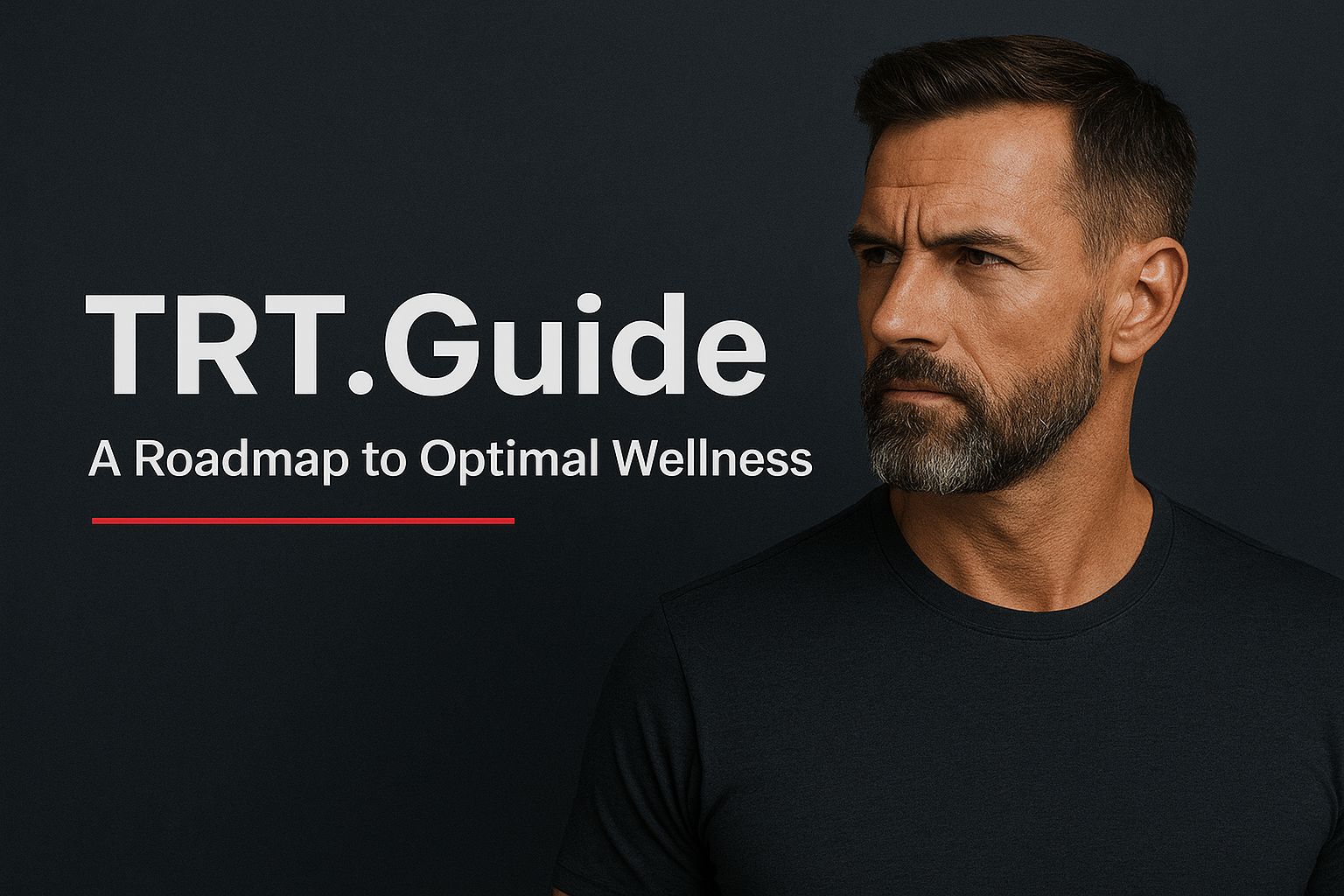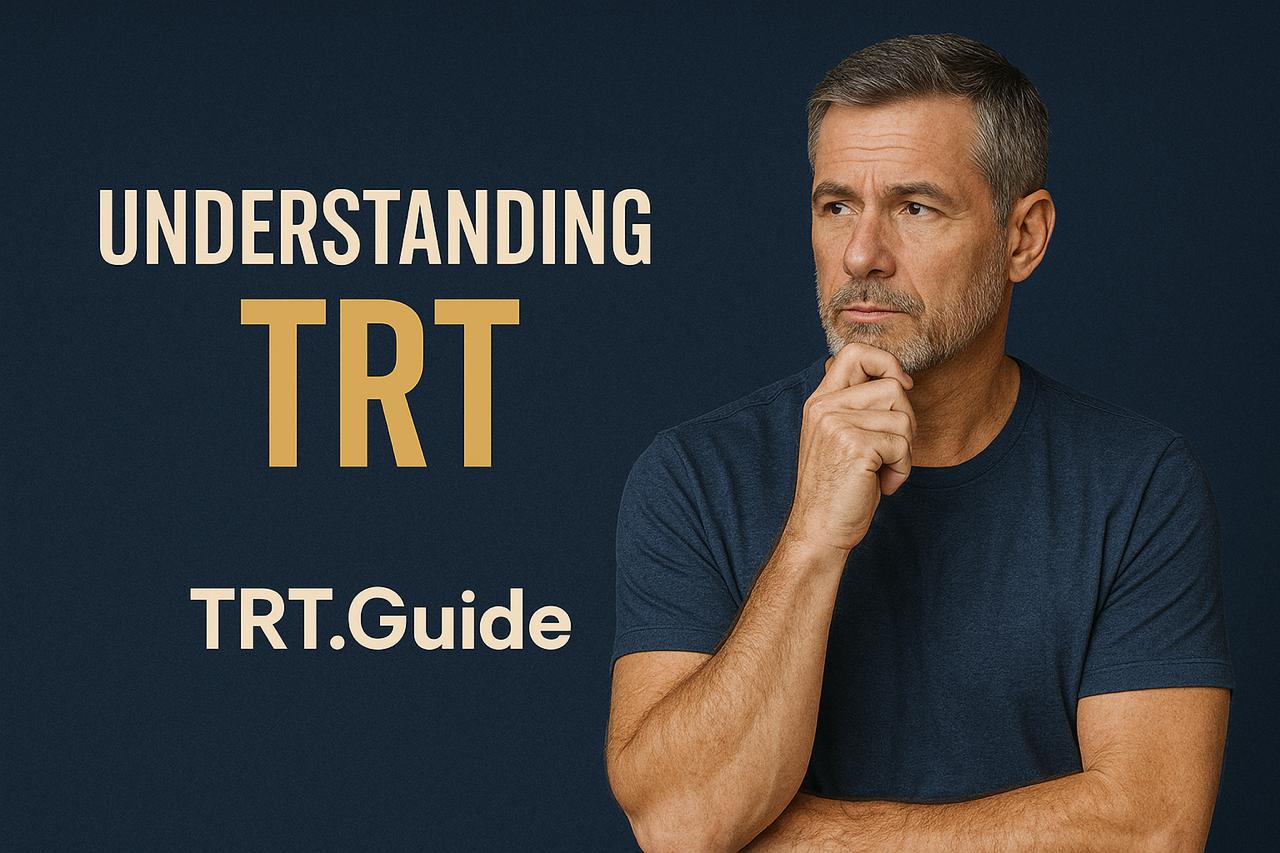When a man feels worn out or down or isn’t longing for sex, low testosterone could be one reason. There’s a big buzz about using testosterone replacement therapy (TRT) to help guys feel young again. In Chicago, clinics create personalized plans for patients.
Before diving into TRT, it’s crucial to know the good and bad. If more energy, a happier mood, and fitness are what you’re after, understanding TRT benefits that has almost no risks is key. With the right info, you can make informed choices about TRT.
All About Testosterone Replacement Therapy
Men who have low testosterone usually get TRT to deal with feelings tiredness, mood swings, and low libido. Options available include injections, patches, gels or pellets.
Why Testosterone Replacement Therapy Matters
Testosterone therapy helps men with low testosterone levels. Common forms include injections and patches. Doctors recommend what works best depending on symptoms and test results.
TRT alleviate symptoms caused by low testosterone in both men and women. It boosts energy as well as mood and sex drive. Regular appointments are important to monitor hormone levels and make adjustments if necessary.
Some are worried about TRT risks and side effects. However, myths can lead one astray. It’s always best to see a doctor for accurate information rather than trying to treat oneself or buy from untrusted sources.
TRT is for men with low testosterone symptoms. Seek a qualified doctor for advice on this therapy.
Function of Testosterone in Males and Females
Testosterone makes males masculine. It assists in building muscles, strengthening bones, as well as enhancing libido in men. For females, it maintains bone density, elevates sexual pleasure, in addition to promoting general wellness in the body system.
Generally, testosterone levels decrease gradually as one ages. Factors like stress, excess fat, and certain medical conditions reduce its production. Altered moods, activity patterns, and sexual health help identify low levels.
When testosterone is very low in men, it leads to impotence, muscle loss, plus too much fat. In women fatigue, mood changes, and reduced drive result from the deficiency. Recognizing these indicators and seeking assistance is essential.
Advantages of Testosterone Replacement Therapy
TRT can significantly enhance quality of life by relieving symptoms. Understanding its potential benefits facilitates taking care of your health.
Greater Energy Levels
Individuals with low testosterone experience profound exhaustion. Quite a number opt for replacement therapy to elevate their levels across the board. Afterward, they discover incredible improvement in work and leisure activities both mentally & physically.
Increased testosterone produces red blood cells responsible for oxygen transport. Consequently, enhanced exercise performance along with vitality comes with higher testosterone levels. Anemic patients benefit greatly from TRT since it alleviates fatigue that arises from insufficient red blood counts. Research indicates those on TRT feel more energetic thus leading better lives.
Men and women feel stronger with TRT, enjoying life more. They also sleep better.
Feeling Better and the State of Complete Well-Being
Low testosterone brings sadness, anxiety, and irritability. TRT lifts the mood; people feel bright, express, and think positively.
Testosterone regulates mood; decreases sadness and anxiety; boosts sex drive; enhances self-worth.
TRT also helps significantly with brightness and relaxation, benefiting relationships and well-being.
Increased Muscle Mass and Strength
TRT builds muscles through protein synthesis. Low testosterone causes muscle loss making one weak.
TRT gives noticeable muscle tone and strength improvements. Consequently, energy fitness climb higher; hence muscles grow.
More muscle boosts metabolism thus aiding weight loss and body shape. Strength helps daily and sports activities.
As big muscles gain strength overall, health gets better. This makes people feel stronger and more sure of themselves.
Find a Chicago Clinic for TRT in the Web
Look online for TRT places in Chicago. Enter “TRT clinics nearby” or “testosterone help Chicago.” Make a note of at least five clinics, and review their sites for services, treatments, qualifications. Search for membership in respected medical organizations. Choose a provider whose location and hours are suitable for follow-ups.
Check Credentials and Experience
See if prospective providers hold valid Illinois licenses. Are they board-certified in endocrinology or urology? It is vital to experience administering TRT. Find doctors with five or more years of practice. More experience typically leads to better results as well. They must do blood tests as well as physical examinations as part of their assessment.
Read Patient Reviews
Look at patient reviews to gauge the quality of a clinic or doctor. Go through Google Reviews, Yelp or Healthgrades for this info. Check what patients say about the way he/she talks listens and treats them. Find out whether most patients are satisfied with him/her. If possible, ask former patients about their experiences. This will help in selecting an appropriate TRT doctor.
The Process of Testosterone Replacement Therapy
TRT has few steps. See a doctor, get hormone tests, and consider treatment options.
Initial Consultation
First meeting with the doctor lasts 30 to 60 mins. List symptoms like tiredness, low sex drive, mood swings.
Doctor reviews medical history and medications to find low testosterone cause. Share openly for right treatment. Discuss diet, exercise, stress too.
Doctor examines for fatness or hormone imbalance. If I suspect low testosterone order tests.
Testosterone Testing
Blood test checks total and free testosterone levels, best done in the morning as levels peak.
Doctors may also check LH and FSH hormones helping see if everything works properly.
Test results come in a few days. Doctor calls to discuss the results. If low testosterone, may suggest TRT. If normal, look for other causes of symptoms.
Options for Replacement
There are several ways to replace testosterone. They include injections, patches, gels and pellets. Each one has different steps to follow.
- Injections: These are given every one to two weeks and work quickly. You can get them at your doctor’s office or give them to yourself after learning how.
- Patches: Apply testosterone patches daily to the skin to steadily release testosterone.
- Gels: Absorb gels into clean, dry skin daily. Stable levels of testosterone are quickly established.
- Pellets: Under-skin implants release testosterone slowly for several months. Infrequent use is a benefit.
Healthcare providers review options with you. Their aim is to align treatment with your habits and health condition. Follow-up appointments allow for monitoring and plan adjustments based on current needs.
Developing a Treatment Plan
Create a plan for testosterone replacement therapy (TRT). This plan should fit your health needs. Here is the process you should follow.
- Will you see a doctor?
Talk to a knowledgeable healthcare provider about your condition. Discuss your signs, medical history, and way of life. This will help see if TRT is suitable for you.
- Will they do blood tests?
Blood tests check testosterone levels. You may fast and take several tests over some days to confirm low testosterone levels. These levels can vary, so testing must be accurate.
- Will they evaluate your signs and health status?
They look into your fatigue, mood swap, weight loss, and sex drive. By Communicating clearly about your state, they tailor the plan as needed.
- Which treatment options are there?
The doctor reviews how each method works. Like injections, patches, gels, or pellets. Which method matches your lifestyle preference and comfort level?
- Make a plan
Work with your doctor to create a treatment schedule that fits your life and needs.
- Plan for regular check-ups
Arrange for every 3-6 months visits to monitor the program and adjust it as necessary.
- Look into necessary lifestyle adjustments
Discuss diet, exercise, and sleep habits to enhance the effectiveness of testosterone replacement therapy.
- Know about pros and cons
Understand possible side effects like acne, mood changes which will help in making informed decisions about your health.
- Seek mental health support
If feeling anxious or depressed counseling or therapy could offer relief during hormone treatment process.
- Stay updated on future changes
Stay informed by talking with healthcare provider about any needed adjustments for keeping the treatment effective over time.
Following these measures ensures safe testosterone therapy tailored to individual needs.
Managing Your Therapy
You must monitor your testosterone therapy regularly. This checks if it works and if there are side effects.
Regular Monitoring and Follow-Up
Your testosterone levels will be checked every 3-6 months.
Your doctor will ask about your treatment, any side effects, and adjust dosages as needed. Open communication is key.
Keep a record of changes in mood, energy, and libido. This helps show how well therapy is working. Use a journal or app to track this information for follow-up visits.
Physical exams check blood pressure, weight, and prostate health. If there are concerns, more tests will be done.
Watch for side effects like acne, sleep issues, or mood swings. Tell your doctor right away so they can change your treatment plan.
These checkups make TRT safe and effective. Focus on getting the best results with your treatment.
Adjusting Dosage as Necessary
Dosage changes may be needed for effective TRT. Everyone responds differently, so plans must be tailored to each person.
- Keep a symptom diary, noting energy, mood, and libido levels to find dosage changes.
- Visit your doctor every 3-6 months the first year to discuss how the treatment is working.
- Get regular blood tests that show if testosterone levels are within the target range; if too high or too low adjustments must be made.
- Talk to your doctor about any side effects of therapy. Tell them what you feel and they will check if your dose needs changing.
- Think about stress, food, and exercise. These things affect how TRT works. They may need to change the dose too.
- Change the dose little by little. Big dose changes can make hormones swing around.
- Know that injections, gels, patches and pellets have different dose schedules. Switching forms means your doctor may adjust the dose.
- Be patient for results. Doses do not just change once but many times to find what is best for you.
- Watch out for weight gain or stress since they affect TRT. Your doctor may adjust the dose based on this information.
- Write down what happens with symptoms, side effects and dose changes. Show this to your doctor so next dose changes can be made correctly.
Do these things to match your TRT doses. Careful watching and talking give the best results for testosterone.
Common Side Effects and Risks
Testosterone replacement therapy (TRT) can create several side effects or risks. Knowing these helps you make choices about treatment.
Potential Side Effects
TRT can lead to fatigue even though it aims to boost energy. It may also cause mood swings because hormone levels go up and down. Some people get acne or greasy skin when they first start treatment.
Sleep apnea is a potential risk of TRT; this is when breathing stops and starts during sleep. There is also a rise in red blood cells (polycythemia), which can thicken blood and possibly raise heart risks. Less commonly, some men experience enlarged breasts (gynecomastia) due to hormonal changes from TRT.
Prostate problems such as enlargement or increased PSA levels may occur, necessitating monitoring for men receiving testosterone therapy. If using injections, there can be soreness at the injection site; therefore, it is important to inform healthcare providers about any side effects so they can adjust therapy as needed.
Long-Term Health Considerations
When considering long-term testosterone replacement therapy, heart health is very important; there are concerns about possible heart risks due to increased red blood cells. Regular heart screenings during treatment are necessary to monitor this issue closely.
Working out with too much testosterone could induce the bones to start hustling, or it might just be that their bone density is getting better. If bones don’t have enough testosterone, they can lose their density with time.
With long-term therapy, testosterone can diminish the ability to have children. Natural testosterone diminishes sperm counts; the higher the number goes, the less sperm are available.
Oral testosterone is known to put a strain on the liver. Periodic tests are necessary to ascertain that it does not overwork.
About mental health conditions, some fell stable moods while others felt anxious or despondent owing to hormonal changes that occurred during the therapy.
It becomes imperative to conduct annual assessments for monitoring bone density, fertility potential, liver function and mental status, which are related to your long-term health, while receiving testosterone replacement therapy.
How To Troubleshoot Frequent Issues
When undergoing testosterone replacement therapy (TRT), the likelihood of commonly-occurring problems cropping up is high, enhancing your whole experience as well as its efficacy is possible through understanding such issues thoroughly and seeking assistance whenever necessary.
Etiquette When Experiencing Side Effects
Side effects can occur when taking TRT; however, some might report feeling tiredness, experiencing moods shifts, acne breakouts or alterations in sexual desire. Take note of the reactions you get and make sure to document each instance detailing intensity levels. Lifestyle adjustments including eating habits, exercise regimes and ways of managing stress must be looked into as they usually impact this.
Tell the doctor if side effects don’t go away or get worse. The doctor might change the dose or try another way to give the medicine. Be honest about any worries you have. This helps the doctor find ways to minimize side effects. You can work together with your doctor to manage side effects more effectively if there’s good communication.
When Should I Call My Doctor?
Contact your healthcare provider right away if you have severe symptoms like swelling or trouble breathing. Report any concerning symptoms such as chest pain, severe headaches, or changes in vision.
Get regular check-ups every 3-6 months during the first year of TRT. During these visits, talk to your provider about any new or worsening symptoms for the doctor to adjust therapy as needed.
If you experience significant mood changes, irritability, or signs of depression, it is important to notify your healthcare provider. Discuss any issues openly with them. Your doctor wants to help optimize testosterone levels and overall well-being.
What to Expect with TRT?
When undergoing TRT, remember that the effects are gradual. Energy level and mood improvements may take weeks or months. Do not expect immediate improvement or drastic changes in overall well-being.
Set reasonable goals for yourself about your energy and mood. Discuss these goals with your doctor, so you can both have an understanding. Remember to be patient as there will be changes in how energetic or happy one feels.
Look at the right living habits that are good for health. This includes having balanced food, exercising regularly, proper sleep which helps get hormones in balance. Write down any changes seen during treatment after which adjustments may be made next visit.
Helpful Tips for Success
Enhance TRT with these strategies for better treatment outcomes and well-being.
Lifestyle Changes to Complement Therapy
Here are some useful hints:
- Eat good food. Have fruits, vegetables, lean meat, and healthy oils. For example, eat spinach, avocado, and nuts. They help your body make hormones well.
- Work out a lot. Do at least 150 minutes of aerobic activity every week. Make your muscles stronger twice a week. This helps with your testosterone level.
- Get enough sleep. Aim for 7 to 9 hours of sleep nightly. Not enough sleep may lower testosterone.
- Reduce stress. Always find ways to lessen stress through meditation, yoga, deep breathing exercises, etc. Stress affects hormones and mental conditions. So learn to cope with it.
- Drink up. Generally, drink 8 to 10 cups of water every day. This helps your body work properly.
- Limit alcohol use. Do not drink too much alcohol. Heavy drinking harms testosterone levels.
- Do not smoke. If you smoke, find ways to quit because it reduces testosterone production.
- Keep good ties with those family members, friends. They’re crucial to your health and state of mind.
Doing these things will help you do the TRT better and have a healthier life.
Getting Help from Others
It is good to have people support you while going through TRT.
- Find expert help. Choose a doctor who is good at giving hormone therapy. Talk openly to him or her to keep checking how you are.
- Make friends. Join groups of people who also go through TRT. This will help you learn from each other.
- Tell your family about TRT. Their encouragement can help keep you on track.
- See a therapist if you feel sad or worried. Getting help from them makes it easier to cope during the treatment.
- Learn more about TRT. The more you know, the better choices you can make for yourself.
- Go to health talks and workshops. You will meet others, find out new things, and make new friends.
- Make a plan every day for therapy and exercise. This will help them work better.
- Track your symptoms, moods, and progress in a journal. It’s easier to notice patterns and discuss them with your doctor.
Having a solid support system makes TRT journey better. It improves your chances of getting healthier.
Conclusion
Consider testosterone replacement therapy in Chicago if you want to regain your energy and well-being. Know the advantages and disadvantages of TRT to make choices that suit you.
Work with a good doctor to adjust your treatment for what’s best for you. Regular check-ups and talking with your doctor help manage any issues during treatment.
Make healthy habits and get support from friends and family. This will improve how you feel about TRT. Be confident as you take these steps towards being healthier and more active!
Frequently Asked Questions
What is testosterone replacement therapy (TRT)?
Testosterone replacement therapy (TRT) helps men with low testosterone levels. It makes them feel better by restoring hormone balance with injections, patches, gels, or pellets.
What are the benefits of TRT?
TRT gives one more energy, better mood, higher sexual interest, and stronger muscles. It improves life quality for those with low testosterone levels.
How to know if I need TRT?
Check with your doctor if feeling tired, moody, or not interested in sex. They can do tests to see if low testosterone is the cause and if TRT would help you.
What should I think about before starting TRT?
Think about gains and risks before TRT. Talk to your doctor regarding symptoms, treatment plan, side effects, and healthy lifestyle that supports TRT.
Ways to take TRT?
You can get TRT by shots, patches, gels, or pellets. The method of choice differs with what works best for you and what your doctor suggests.
What are TRT risks?
TRT can cause mood swings, acne, high red cells, prostate problems, or sleep apnea. Regular check-ups with your doctor manage side effects during TRT.
How often do I follow up during TRT?
TRT follow up is needed every three to six months in the first year, and every year afterward to monitor testosterone level and adjust treatment.






